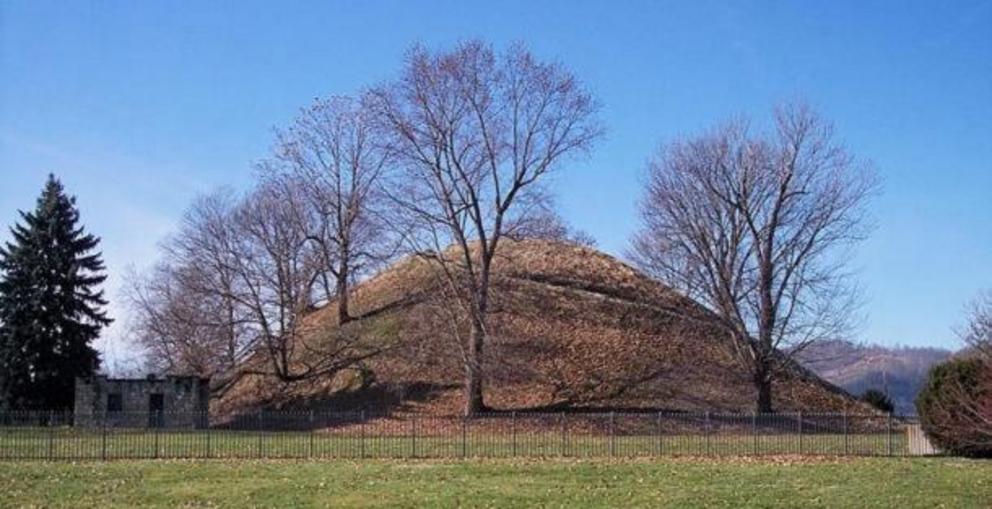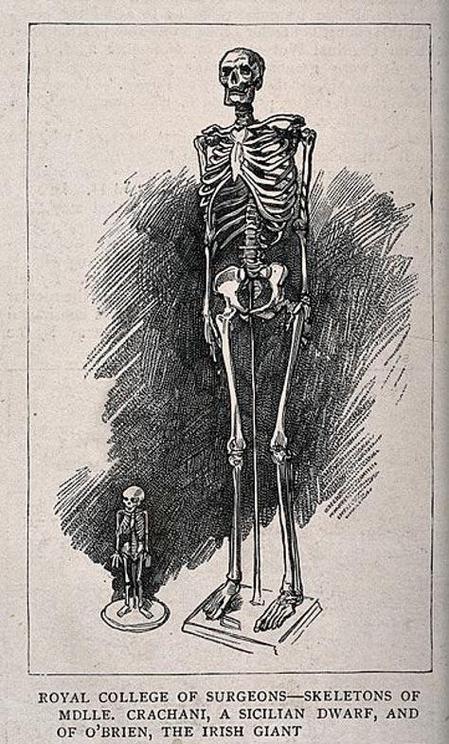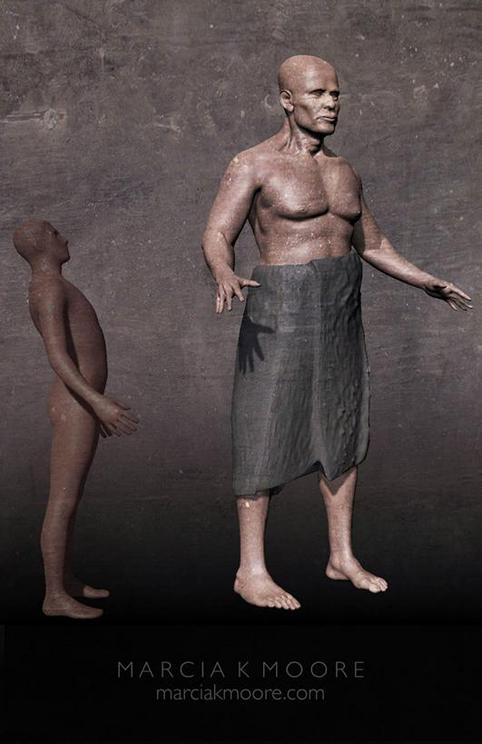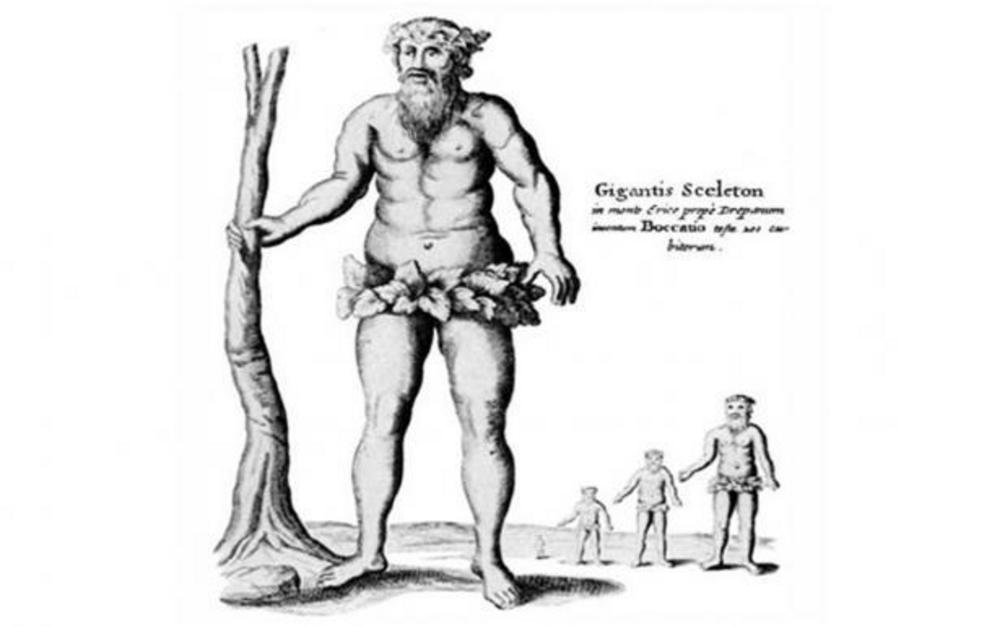The giants of Doddridge County: body snatching and buried notebooks – Part II
Featured image: A human skull. Representational image only.
It is important to note that in relation to the measurements published for the gigantic skeletons from the Zahn Farm mounds, Sutton’s method of determining height would actually have underestimated the size of the buried individuals, since the actual ratio of femur length to overall height is closer to 1/3.5 or even 1/4, according to regression and absolute ratios used by scientists.
A review of the published Johnson-Thompson Mound report in light of this correspondence raises interesting possibilities. The report is embellished with Sutton’s usual attention to detail:
“The mound contained three extended burials and one flexed in the secondary mantle, and one extended and one semi-flexed burial on the mound floor. There were four distinct cremations although the large quantity of bone fragments suggests that the deposits represent more than four individuals.”
Sutton provides meticulous detail regarding the burials, as with these two interments 14 inches (35 cm) below the mound floor:
“They had been placed in a north-south position with heads toward the south. One burial, 5 feet 11 inches (228.6 cm) long, was that of a male and the other, 5 feet 3 inches (160.02 cm) long, was that of a female. The distance between the burials was 26 inches (66 cm). A ridge of undisturbed subsoil separated them.”
However, two burials found in the northeast corner of the mound (burials 3 and 4) are not measured, even though the description offers numerous other details:
“Burial No.3, extended with the head toward north-east, was 35 inches (89 cm) above the mound floor. Burial No.4 with the skull to the south-west, was 27 inches (68.5 cm) above the mound floor. The skeletal material was in fair condition.”
Sutton notes that these burials were in the extended position. This, along with their “fair condition,” makes the absence of measurements even more suspect in light of Potter’s earlier inquiries regarding Sutton’s measurement techniques.
Does this absent data reflect the alteration of the Johnson-Thompson Mound report to “conform” to the criteria of Potter and Baby as mentioned in Sutton’s letter?
 A burial mound of the Adena Culture. Grave Creek Mound in Moundsville, West Virginia. Representative image only.
A burial mound of the Adena Culture. Grave Creek Mound in Moundsville, West Virginia. Representative image only.
Measurements are also absent from one other flexed and one extended burials from the mound, but this may be due to the fact that these two burials partly overlapped, making precise measurement difficult.
Body Snatchers
There are apocryphal sources detailing Suttons’ gigantic discoveries at the Zahn Mounds. One such account appears in Mound Builders, Indians, and Pioneers (1956), by William Price. Price wrote many of his entries based on interviews with witnesses. The wording of this passage certainly implies that he gained his information from Sutton himself:
“Mr. Sutton says that he believes the bones he recovered to have belonged to a very large skeleton. This idea corresponds with those gathered from other spots in the state and would lead one to think that a race of people who were larger than average size once lived through this part of the state.”
The authors’ investigation on the ground in Doddridge County revealed that Morgansville, where the Zahn Farm mounds were located, is no longer a town. However, contact was made with a credible source; who for the time being at least, wishes to remain anonymous. According to this source, there was a second excavation of the Zahn-Maxwell mound in 1960, and another gigantic skeleton had been uncovered. As with Page Lockard in 1929, an assistant at the site had stolen the giant.
We were given the name of this individual and were told that the information was very sensitive due to the fact that surviving relatives still live in the region. The gigantic skeleton taken from the mound in 1960 was supposedly between seven and eight feet (two and 2.4 meters) long, and had subsequently been “sold to a wealthy western buyer”.
Following this, inquiries were made with Ernest Sutton’s surviving family members and Salem University as to the current location of his materials. The authors were ultimately pointed in the direction of the Doddridge County Historical Society in the county seat of West Union.
 Skeletons of a male giant and a female dwarf, displayed at the Royal College of Surgeons.
Skeletons of a male giant and a female dwarf, displayed at the Royal College of Surgeons.
A Revealing Notebook
While reviewing Sutton’s materials, we were surprised to find a notebook in Ernest Sutton’s own handwriting containing none other than the detailed report of a second excavation of mound Do-2 conducted in 1960.
The journal contains excavation notes entered on a semi-daily basis between May 31, 1960 and July of the same year. This time the mound is referred to as the Powel-Fox Mound, due to a change of ownership of the two farms straddled by the tumulus.
In an entry dated July 6, Sutton notes that a “possible burial area” had been located. This newly discovered tomb was located near those excavated 31 years previously, since the July 7 entry mentions the rediscovery of the 1929 excavation as the mound floor was reached.
Interestingly, the remaining pages of the journal, which would have contained the details of the excavation of the tomb, had been torn out and lost. An inventory of finds with the journal mentions that the burial was “semi-flexed, 9 inches from the mound floor”, but unfortunately no other measurements are given.
Remarkably, the notebook does contain consistent reference to the individual who was named by our source as taking a gigantic skeleton from the Powel-Fox mound during this second excavation. There is no question that this individual was an assistant in this unpublished second excavation in 1960.
Our inquiries as to the journal’s history turned up the fact that the only person to handle it other than Sutton’s own family and the Society was Edward McMichael, State Archeologist of West Virginia between 1960 and 1967. Had these pages been removed to conceal inconvenient truths?
Significant Conclusions
The investigation of the Doddridge County giants yielded several significant points not only for giantology, but also of the history of archeology in the Ohio Valley.
To begin with, the details of the newspaper articles associated with these particular finds were remarkably accurate, as noted above. Even the proper stratigraphy of the Zahn Farm Mounds is inherent in the accounts, along with the correct artifacts from the site. This should raise some question as to whether many of the more incredible articles extant regarding giants from mounds may not also contain accurate data. Certainly, all of the press stories utilized by giantologists can no longer simply be written off as Yellow Journalism in the face of comparisons such as these. The authors have found many more such instances to be included in their forthcoming book.
The investigation also provided a rare glimpse into the relationship between skilled amateurs such as Ernest Sutton and large organizations such as the Ohio Historical Society during the mid-twentieth century, the most important era for the development of Woodland Archeology. In fact, it was people like Ernest Sutton who pioneered the exploration of the tumuli of the Adena and Hopewell Cultures out of the sheer love of the subject matter, though the establishment today largely downplays this fact.
 Artist’s representation of North American giant.
Artist’s representation of North American giant.
As evidenced by the correspondence between Sutton and the Ohio Historical Society, there was a clear editing and censorship of field reports undertaken at the hands of individuals such as Raymond S Baby and Martha Potter. Sutton’s letter also mentions several artifacts which Baby himself removed from the site and failed to reproduce for the published report. This tendency of Baby’s actually beleaguered Sutton’s work on a regular basis. (See for example the Adena Artifacts Lost Facebook Page .)
Finally, the history of the Zahn Farm Mounds suggests that for some time, there was an interest in acquiring gigantic skeletons. Our investigation suggested that individuals who joined as assistants to Sutton’s excavations may have looted this single site more than once, during a period spanning over 30 years. According to our source, this practice was well known decades ago in the region. The question emerges as to who would have had such a desire for gigantic remains as to offer monetary reward for them? In relation to this we would point to the fact that after the late 1800s, the names of wealthy families and various philanthropies begin to appear in the reports of mound excavations around the United States, often in connection with gigantic skeletons. In their forthcoming book, the authors will attempt to demonstrate what may have been the true motive for the confiscation of the race of giants from the historical record.
 Illustration from "Mundus subterraneus" - suggesting that fossil bones were from giants.
Illustration from "Mundus subterraneus" - suggesting that fossil bones were from giants.

